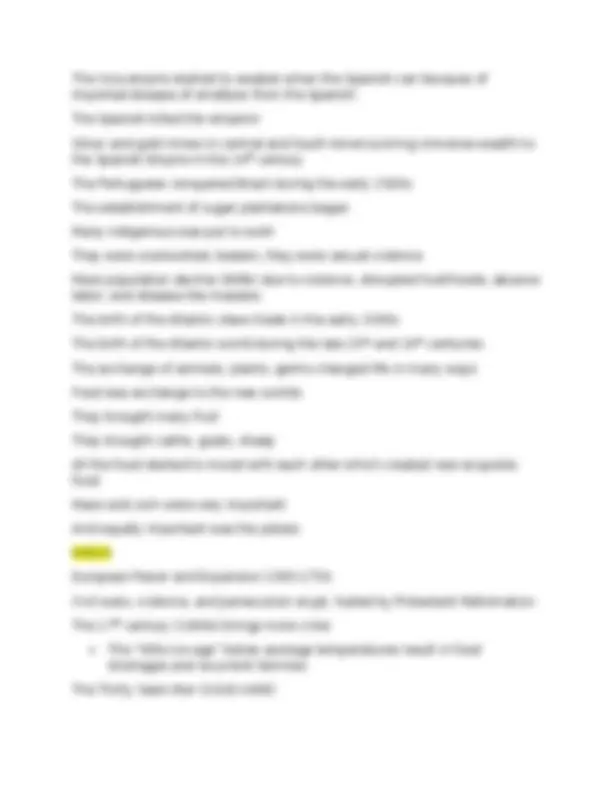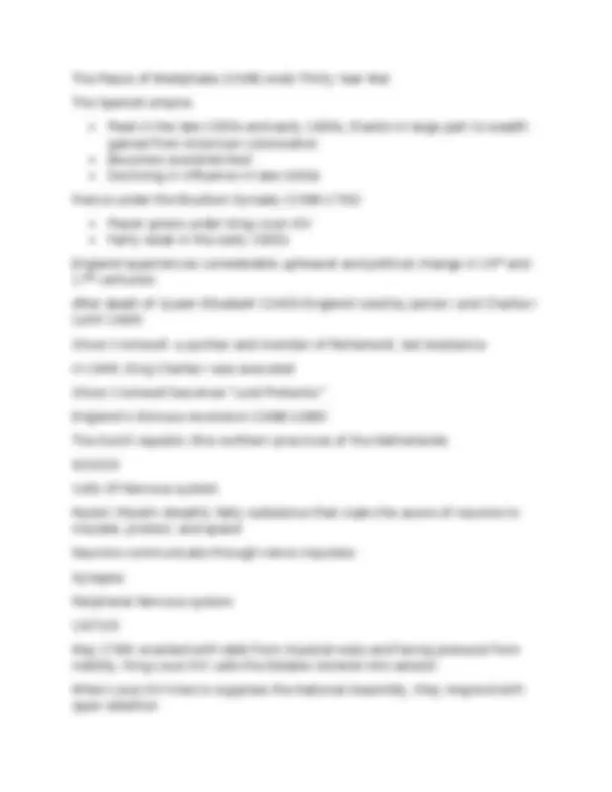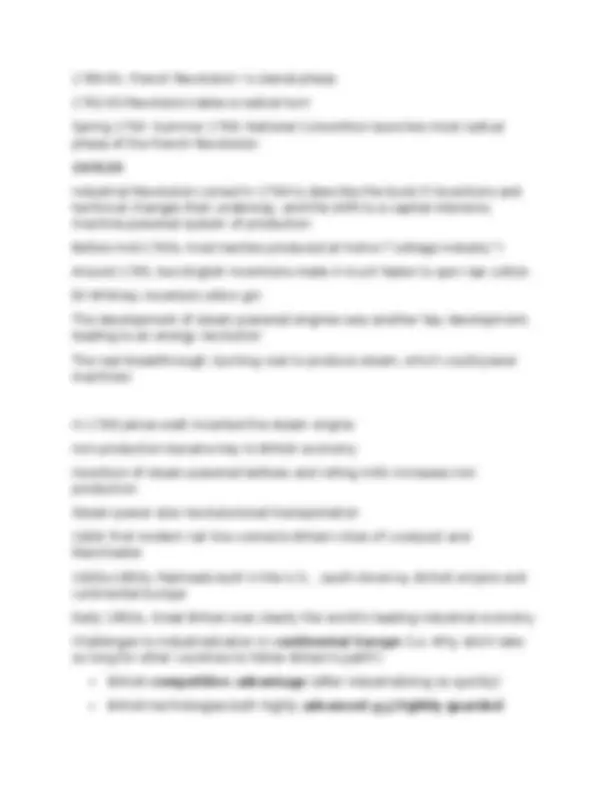





Study with the several resources on Docsity

Earn points by helping other students or get them with a premium plan


Prepare for your exams
Study with the several resources on Docsity

Earn points to download
Earn points by helping other students or get them with a premium plan
Community
Ask the community for help and clear up your study doubts
Discover the best universities in your country according to Docsity users
Free resources
Download our free guides on studying techniques, anxiety management strategies, and thesis advice from Docsity tutors
A chronological overview of significant historical events from the 15th to the 19th centuries, focusing on global interactions and transformations. It covers key developments such as the age of exploration, the rise of european empires, the atlantic slave trade, the industrial revolution, and major revolutions in europe and america. The document highlights the interconnectedness of these events and their impact on the world.
Typology: Study notes
1 / 6

This page cannot be seen from the preview
Don't miss anything!




Plague Reformation Atlantic/global slave trade 1684 treaty of Westphalia Industrial rev American rev French rev Napolean Russian rev WWII Moon landing Fall of berli wall 8/28/ The Acceleration of Global contact c. 1450- The Birth of Globalization “The Old World” – Afro circuits by 1450 By 1450 there was a dense network of exchange Portuguese and Spanish did explorations to expand their empires Motivations- Gold, God, Glory Material factors- Improved technologies as in ships, cartography, and new navigation like the compass Christian religion was really big in the late 1400s Prince henry “The navigator” In the 1420 under his command the Portuguese started to settled They began to develop 4-5 trading to post to increase their influence
Vaso de Gama proved you can have a direct route to Asia They wanted control over the routes The Portuguese started post The Spanish wanted to find a western route instead of going in competition with the Portuguese Christopher Columbus asked the Portuguese to fund him but was denied so he asked the Spanish He did not make it to Asia Hispaniola He enslaved the indigenous people he encountered He started governing but he was not a governor which caused a revolt In the 1500s he was arrested stripped of all his titles He died in 1506 and did not reach Asia Amerigo Vespucci realized Columbus did not find Asia and realized the world was bigger than they knew. Amerigo named the continent that Columbus found “Mundus Novus” In 1519 the new Spanish King sent Ferdinand Magellan on the exploration to Asia, but His crew was killed by islanders The Birts of the “Atlantic World” Spanish settlement began in the Caribbeans 1519 Hernan Cortes leads party to Mexico The Aztec Empire (present day Mexico) It was a advanced empire Cortes wanted it to himself he wanted to conquer it The emperor invited Cortes in but after a few months the Spanish turned on them The Aztec empire would then fall to the Spanish Spanish conquest of South America during the early 16th^ century
The Peace of Westphalia (1648) ends Thirty Year War The Spanish empire Peak in the late 1500s and early 1600s, thanks in large part to wealth gained from American colonization Becomes overstretched Declining in influence in late 1600s France under the Bourbon Dynasty (1589-1793) Power grows under King Louis XIV Fairly weak in the early 1600s England experiences considerable upheaval and political change in 16th^ and 17 th^ centuries After death of Queen Elizabeth (1603) England ruled by James I and Charles I (until 1649) Oliver Cromwell- a puritan and member of Parliament, led resistance In 1649, King Charles I was executed Oliver Cromwell becomes “Lord Protector” England’s Glorious revolution (1688-1689) The Dutch republic (the northern provinces of the Netherlands 9/10/ Cells Of Nervous system Myelin (Myelin sheath); fatty substance that coats the axons of neurons to insulate, protect, and speed Neurons communicate through nerve impulses Synapse Peripheral Nervous system 10/7/ May 1789: wracked with debt from imperial wars and facing pressure from nobility, King Louis XVI calls the Estates General into session When Louis XVI tries to suppress the National Assembly, they respond with open rebellion
1789-91: French Revolution ‘s Liberal phase 1792-93 Revolution takes a radical turn Spring 1793- Summer 1794: National Convention launches most radical phase of the French Revolution 10/9/ Industrial Revolution coined in 1799 to describe the burst if inventions and technical changes then underway, and the shift to a capital-intensive, machine-powered system of production Before mid-1700s, most textiles produced at home (“cottage industry”) Around 1765, two English inventions make it much faster to spin raw cotton Eli Whitney invented cotton gin The development of steam-powered engines was another key development, leading to an energy revolution The real breakthrough: burning coal to produce steam, which could power machines In 1769 James watt invented the steam engine Iron production became key to British economy Invention of steam-powered bellows and rolling mills increases iron production Steam-power also revolutionized transportation 1829: first modern rail line connects Britain cities of Liverpool and Manchester 1830s-1850s: Railroads built in the U.S. , south America, British empire and continental Europe Early 1850s, Great Britian was clearly the world’s leading industrial economy Challenges to industrialization in continental Europe (i.e. Why did it take so long for other countries to follow Britain’s path?)